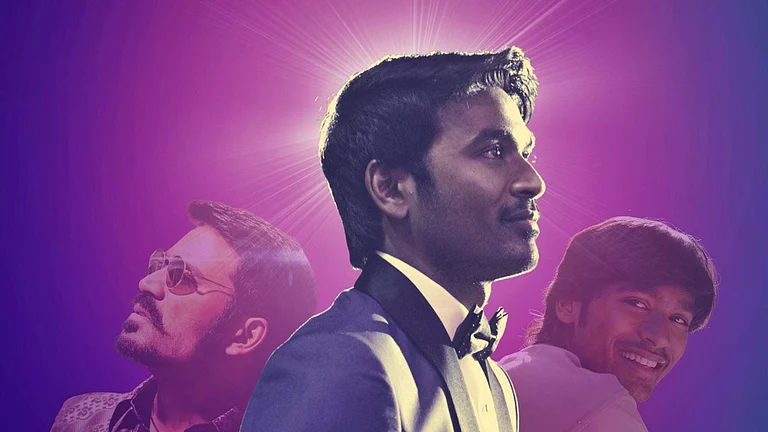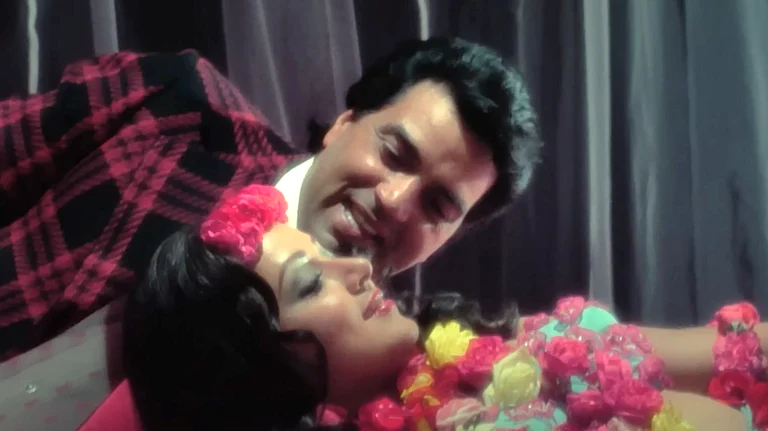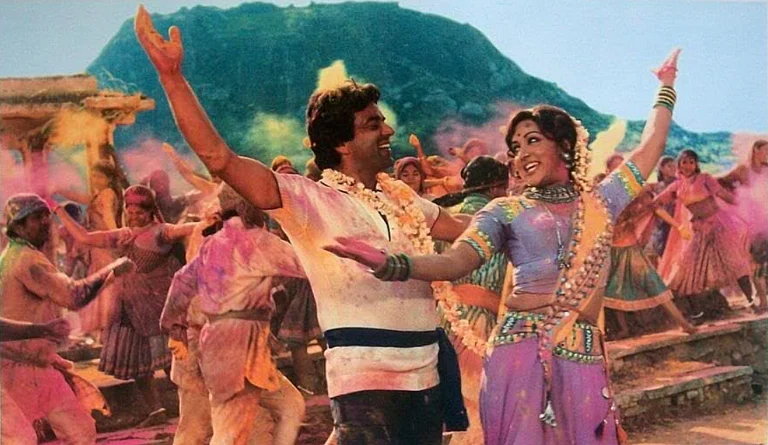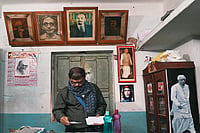
Iconic moments, like his role in Sholay, shaped the emotional vocabulary of Hindi cinema & influenced generations of audiences.
Dharmendra transformed Hindi cinema, moving from tender romantic roles to defiant, larger-than-life characters, leaving a mark on popular culture.
His mastery of Urdu & playful use of English showcased his versatility & charm, adding a unique dimension to his screen persona.
Dharmendra, as we once knew him, no longer exists. He has become like his own song: “Jaane kya dhoondhti rehti hai yeh aankhen mujh mein, raakh ke dher mein shola hai na chingari hai” (Who knows what these eyes keep searching for in me; there is neither a flame nor a spark left in this heap of ashes). The song was from the film Shola aur Shabnam (1962), written by Kaifi Azmi and composed by Khaiyyam. Dharmendra entered the Bollywood with a whisper, but he became boisterously present in Hindi cinema. At the time, Bollywood was still trying to find its way out of the towering shadows cast by Dilip Kumar, Raj Kapoor, Dev Anand, and Rajendra Kumar. Then came Dharmendra, a new kind of hero, tender yet intense, vulnerable yet irresistibly handsome. The very emblem of unrequited love. His early acts bore the muffled understatement of Dilip Kumar, but he soon broke free to carve his own idiom. Dharmendra reinvented the idea of the main protagonist, transforming from delicate to defiant, from the romantic dreamer to the embodiment of raw masculinity.
In popular perception, Dharmendra’s cinematic presence can be distilled into three enduring effects on the Indian masses. The first and perhaps most iconic of these is his role as Viru in Sholay (1975).
Particularly unforgettable is the bibulous moment where he climbs a water tank and threatens to kill himself if Basanti does not accept his love. That moment came to define Bollywood in a big way. It changed the emotional vocabulary of Hindi cinema. The dramatic exaggeration and humour of the scene turned a moment of despair into something theatrical, giving way to a new cinematic pattern. Now unrequited love could justify emotional grandstanding. And extreme gestures could be performed as proof of passion by the hero. This trope has pervaded popular culture in a big way even today. We keep witnessing post break-up lovers in inebriated state who mimic Dharmendra’s performative vulnerability atop that tank.
By the early 1980s, a new Dharmendra was born who defied the melancholy of his first song- ‘Raakh ke dher mein shola hai na chingari hai’ (there is neither a flame nor a spark left in the heap of ashes). This reborn Dharmendra was no longer a symbol of tenderness or loss. He, instead, became a Shakespearean character, full of sound and fury, signifying what film scholar Karen Gabriel aptly describes as Bollywood’s ‘sexual economy.’ Many of his films of this period often had the same punchline: ‘Kutte, Kamine, main tera khoon pee jaunga!’ More than a dialogue, it was a battle cry of masculine defiance in North India’s popular imagination. Through this muscular rage, ‘Aam Aadmi’ released his repressed desire. He starred in a series of films where the Izzat (honour of women) formed the emotional core. These roles often showcased Dharmendra’s signature outbursts, his voice rising into a falsetto of masculine anxieties.
Drunken banter in North India would sometimes fuse the two images, Dharmendra and the ‘dog-eater’ stereotype. There used to be a racist punchline: ‘Why the people of the North-East find Dhramendra friendly? Because they both drink dog’s blood.’
The dialogue of Kutte-Kamine fed into troubling stereotypes. The term ‘dog’ carried racial undertones that were soon redirected toward communities from India’s North-East, who were dehumanised through popular jokes and slurs. The casual cruelty of this humour reveals a deeper cultural faultline which continues to persist as a divide between mainstream India and the peripheral North-East.
The third fascinating persona of Dharmendra emerged not from muscle, but from language, from his witty ambiguity with English and his effortless mastery of Urdu. In Chupke Chupke (1975), his badinage with Om Prakash over Hindi and English was quite a postcolonial Shikayat (complaint). In this conversation, English language was pilloried for its coloniality and was mocked for Avaigyanic vyakarana (non-scientific grammar) and stiff mannerisms. Through Dharmendra’s humour, Hindi-speaking India could seek pride in its linguistic dignity.
But even more nuanced layer of Dharmendra’s persona was his relationship with Urdu. He spoke Urdu with effortless grace. His voice carried a falsetto with a lyrical softness. His flawless diction and immaculate pronunciation of Urdu made many in North India assume he must be a Muslim. In a deeply divided society, such seamless movement between linguistic worlds was nothing short of subversive. A Sikh from Punjab, Dharmendra came to represent an older, fading vision of India in which identity was a still a bridge and not a border.
They say that to be polyglot is to live many lives. Dharmendra’s linguistic plurality gave him that power. Yet, history’s irony caught up. In the 1990s, he joined the Bharatiya Janata Party, a formation wary of the very hybridity he symbolised. The man who once gave Urdu its most romantic resonance now stood amid a politics that treated the language as alien. Today, the Shola (powerful flame) and Chingari (tiny spark) of that cultural syncretism lie buried somewhere in the ashes of memory as he would lip-sync: ‘Rakh ke dher me Shola hai na Chingari hai.’
Rashid Ali teaches Media Studies at Central University of Jammu.





















